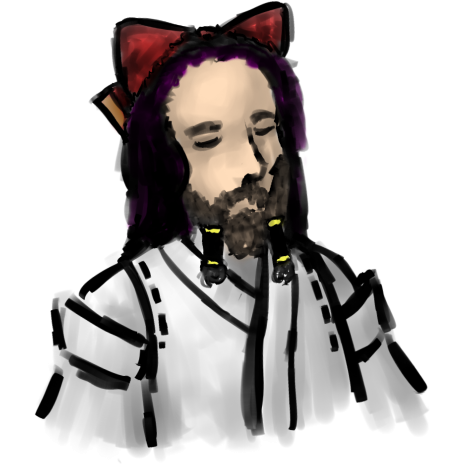- 📝 Posted:
- 🚚 Summary of:
- P0146
- ⌨ Commits:
08bc188...456b621- 💰 Funded by:
- Ember2528, -Tom-
- 🏷 Tags:
Y'know, I kinda prefer the pending crowdfunded workload to stay more near the middle of the cap, rather than being sold out all the time. So to reach this point more quickly, let's do the most relaxing thing that can be easily done in TH05 right now: The boss backgrounds, starting with Shinki's, 📝 now that we've got the time to look at it in detail.
… Oh come on, more things that are borderline undecompilable, and
require new workarounds to be developed? Yup, Borland C++ always optimizes
any comparison of a register with a literal 0 to OR reg, reg,
no matter how many calculations and inlined function calls you replace the
0 with. Shinki's background particle rendering function contains a
CMP AX, 0 instruction though… so yeah,
📝 yet another piece of custom ASM that's worse
than what Turbo C++ 4.0J would have generated if ZUN had just written
readable C. This was probably motivated by ZUN insisting that his modified
master.lib function for blitting particles takes its X and Y parameters as
registers. If he had just used the __fastcall convention, he
also would have got the sprite ID passed as a register. 🤷
So, we really don't want to be forced into inline assembly just
because of the third comparison in the otherwise perfectly decompilable
four-comparison if() expression that prevents invisible
particles from being drawn. The workaround: Comparing to a pointer
instead, which only the linker gets to resolve to the actual value of 0.
![]() This way, the compiler has to make room for
any 16-bit literal, and can't optimize anything.
This way, the compiler has to make room for
any 16-bit literal, and can't optimize anything.
And then we go straight from micro-optimization to
waste, with all the duplication in the code that
animates all those particles together with the zooming and spinning lines.
This push decompiled 1.31% of all code in TH05, and thanks to alignment,
we're still missing Shinki's high-level background rendering function that
calls all the subfunctions I decompiled here.
With all the manipulated state involved here, it's not at all trivial to
see how this code produces what you see in-game. Like:
- If all lines have the same Y velocity, how do the other three lines in background type B get pushed down into this vertical formation while the top one stays still? (Answer: This velocity is only applied to the top line, the other lines are only pushed based on some delta.)
- How can this delta be calculated based on the distance of the top line
with its supposed target point around Shinki's wings? (Answer: The velocity
is never set to 0, so the top line overshoots this target point in every
frame. After calculating the delta, the top line itself is pushed down as
well, canceling out the movement.
 )
) - Why don't they get pushed down infinitely, but stop eventually? (Answer: We only see four lines out of 20, at indices #0, #6, #12, and #18. In each frame, lines [0..17] are copied to lines [1..18], before anything gets moved. The invisible lines are pushed down based on the delta as well, which defines a distance between the visible lines of (velocity * array gap). And since the velocity is capped at -14 pixels per frame, this also means a maximum distance of 84 pixels between the midpoints of each line.)
- And why are the lines moving back up when switching to background type C, before moving down? (Answer: Because type C increases the velocity rather than decreasing it. Therefore, it relies on the previous velocity state from type B to show a gapless animation.)
So yeah, it's a nice-looking effect, just very hard to understand. 😵
With the amount of effort I'm putting into this project, I typically gravitate towards more descriptive function names. Here, however, uth05win's simple and seemingly tiny-brained "background type A/B/C/D" was quite a smart choice. It clearly defines the sequence in which these animations are intended to be shown, and as we've seen with point 4 from the list above, that does indeed matter.
Next up: At least EX-Alice's background animations, and probably also the high-level parts of the background rendering for all the other TH05 bosses.
